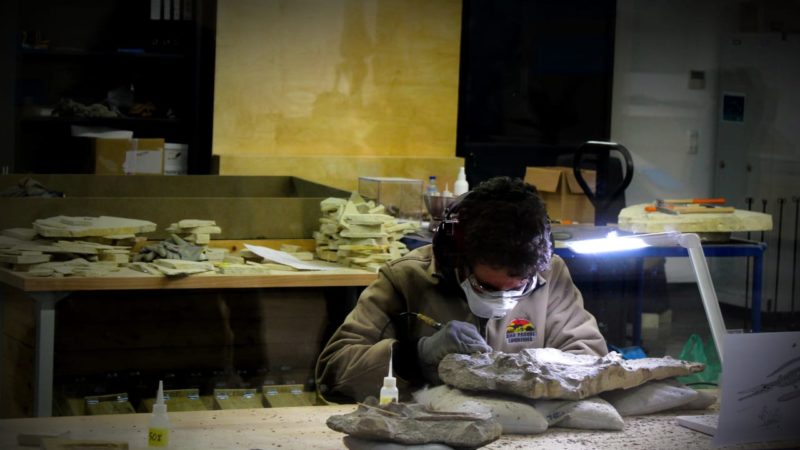In an age where security concerns are paramount, advancements in CCTV installation technology have taken center stage. As businesses and homeowners seek to protect their assets, the evolution of surveillance systems opens up new possibilities.
This article explores the latest trends and innovations in the field, shedding light on what makes today’s CCTV systems a cut above the rest.
Enhanced Resolution and Image Clarity
Gone are the days of grainy footage. Recent advancements have brought high-definition (HD) and ultra-high-definition (UHD) cameras to the forefront. These cameras now provide crystal-clear images, making it easier to identify people and objects.
With resolutions reaching up to 4K, the clarity is nothing short of remarkable. For a seamless upgrade to these advanced systems, many property owners rely on Labs Smart Wiring to ensure professional installation and optimal performance.
This increased image quality is particularly beneficial in critical situations. Law enforcement agencies often rely on clear footage for investigations. Moreover, businesses can use high-resolution video to enhance security protocols and ensure a safer environment for customers and employees alike.
Smart Technology Integration
Smart technology is reshaping the landscape of CCTV systems. Many modern cameras can now connect to home or business networks, allowing for remote monitoring via smartphones or tablets. This feature means users can keep an eye on their property from virtually anywhere.
Integrating artificial intelligence (AI) further enhances these systems. AI algorithms can analyze footage in real time, detecting unusual behaviors or identifying specific individuals. This proactive approach to security not only reduces response times but also minimizes false alarms, making it an attractive option for both homeowners and businesses.
Cloud Storage Solutions
Traditional storage methods often come with their own set of challenges, such as limited space and vulnerability to theft. Cloud storage has emerged as a reliable alternative, allowing users to store video footage securely online. This shift offers several advantages, such as scalability, accessibility, and better data security.
With cloud storage, there’s no need for extensive on-site hardware. Users can access their footage from anywhere, at any time, and easily share it with law enforcement if needed. This flexibility is particularly useful for businesses with multiple locations or those that require high levels of security.
Advanced Motion Detection Features
Traditional motion detection often resulted in an overload of alerts, many of which proved to be false alarms. Innovations in motion detection technology have transformed this aspect of surveillance. Today’s systems utilize advanced algorithms to differentiate between ordinary movement and potential threats.
Some cameras can even distinguish between humans, animals, and vehicles. This specificity dramatically reduces the number of unnecessary notifications, ensuring that users are only alerted when there’s a genuine concern.
Integration with Home Automation Systems
The convergence of CCTV technology with home automation is a game changer. Modern systems seamlessly integrate with other smart devices, such as door locks, alarms, and lighting. This interconnectedness allows for a more coordinated approach to security.
For instance, a detected motion event can trigger outdoor lights to turn on or send an alert to the homeowner’s phone. Such features enhance convenience and security, creating a holistic protection plan for any property.
Wireless Technology Advancements
Wired installations have long been the standard, but the rise of wireless technology is changing the game. Wireless cameras eliminate the need for cumbersome cabling, making installation easier and more flexible. They can be placed in virtually any location, whether indoors or outdoors, without the constraints of wiring.
However, wireless systems do come with their own considerations, such as battery life and connectivity strength. As technology improves, manufacturers are addressing these issues, leading to more reliable and efficient wireless solutions.
360-Degree Surveillance Options

Panoramic cameras that offer 360-degree coverage are gaining traction. These cameras eliminate blind spots, providing a comprehensive view of the environment. Ideal for large spaces like parking lots or warehouses, they ensure no corner goes unmonitored.
With advanced features like remote pan, tilt, and zoom capabilities, users can control the camera’s angle and focus in real time. This flexibility allows for immediate adjustments based on unfolding events, ensuring thorough monitoring of any situation.
Enhanced Cybersecurity Measures
With the rise of internet-connected cameras comes the increased risk of cyber threats. Manufacturers are responding to this challenge with enhanced cybersecurity measures. Encryption protocols, secure access controls, and regular firmware updates are now standard in many systems.
These steps are crucial for safeguarding sensitive footage and protecting user privacy. As security breaches become more common, the emphasis on cybersecurity within CCTV systems is more important than ever.
User-Friendly Interfaces
As technology becomes more sophisticated, the need for user-friendly interfaces has never been clearer. Modern CCTV systems often come equipped with intuitive dashboards and easy navigation, making it simple for users to access features and settings.
Many systems offer mobile applications with straightforward controls. This accessibility empowers users to manage their security with minimal hassle, regardless of their technical expertise. The goal is to provide a seamless experience, allowing anyone to take charge of their surveillance needs.
Environmental Considerations
Sustainability is a growing concern in all technology sectors, and CCTV installation is no exception. Manufacturers are increasingly focusing on energy-efficient products and eco-friendly materials. Solar-powered cameras, for example, offer a sustainable way to monitor areas that lack electrical outlets.
Additionally, many new systems are designed to be more durable, minimizing waste and the need for frequent replacements. As environmental awareness rises, consumers are also more inclined to choose products that align with their values.
Customization and Scalability
Today’s CCTV systems offer impressive customization options. Businesses and homeowners can tailor their setups to meet specific needs, whether through the types of cameras used or the features activated. This flexibility allows for a more personalized approach to security.
Scalability is another critical component. Systems can easily expand as security needs grow. Whether adding more cameras or integrating new features, users can enhance their setup without complete overhauls.
Importance of Professional Installation
While DIY options abound, the value of professional installation remains significant. Experts can assess specific security needs and recommend the best solutions. They ensure optimal placement of cameras and provide guidance on integrating systems with existing infrastructure.
Professional installation often translates to better performance. Technicians can troubleshoot potential issues and guarantee that everything functions smoothly from the start. This expertise lays a solid foundation for effective surveillance.
Ongoing Support and Maintenance
Once installation is complete, ongoing support is crucial. Many providers offer maintenance plans that cover regular check-ups, software updates, and troubleshooting. This service ensures that systems remain up-to-date and functional, providing peace of mind for users.
Having reliable support is particularly important in the event of technical issues. Quick response times can make all the difference in protecting a property, allowing users to focus on their daily activities without constant worry about security lapses.
In summary, the landscape of CCTV installation technology is vibrant and ever-changing. With innovations in resolution, smart integrations, and more, users are empowered to take control of their security like never before. Exploring these trends opens up a world of possibilities for anyone looking to safeguard their space.






































